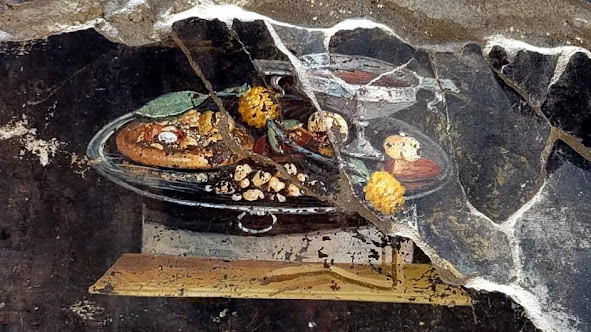- Archaeologists operating within the historic metropolis of Pompeii have made an brilliant discovery—a remarkably well-preserved fresco depicting what seems to be a 2,000-year-vintage "now not a pizza." The find has generated substantial pleasure amongst scholars and offers a unique glimpse into the culinary practices and artistic traditions of the time.
- The fresco turned into uncovered in a domestic living throughout ongoing excavations at the UNESCO World Heritage site of Pompeii, which became famously buried below volcanic ash at some point of the eruption of Mount Vesuvius in 79 AD. The metropolis's renovation offers a useful window into the day by day lives and customs of its population.
- The currently discovered fresco measures approximately three toes through three toes and capabilities a round, flat bread-like object with various toppings. The shape and look undergo a putting resemblance to a contemporary pizza, although professionals are quick to note that it isn't an real pizza as we understand it nowadays.
- The depiction famous a round, doughy base, probably made from wheat flour, with a raised crust alongside the rims. The important region shows unique components arranged in sections, in all likelihood denoting various toppings or flavor combos. These include what seem like tomatoes, in all likelihood representing sauce, leafy veggies, olives, and what can be small fish or anchovies.
- The fresco's discovery sheds mild on the culinary practices of the time and challenges preconceived notions approximately historic Roman cuisine. It shows that historical Romans may also have loved flatbread-like dishes with toppings lengthy before the arrival of the modern-day pizza.
- In addition to its culinary importance, the fresco exemplifies the artistic talent and strategies hired via Pompeian painters. The use of vibrant shades, complicated information, and perspective demonstrates the mastery of the artist in taking pictures the essence of the concern be counted. The skillful execution of the fresco underscores the excessive stage of artistic sophistication that existed in Pompeii at some point of the first century AD.
- Scholars agree with that the fresco probable adorned the partitions of a eating place, providing a ornamental and appetizing visual enjoy for the inhabitants and their guests. It serves as a testament to the importance of meals and communal dining in historical Roman culture, highlighting the social and cultural significance connected to food and gatherings.
- The discovery of the "now not a pizza" fresco further emphasizes the significance of ongoing archaeological paintings at Pompeii. Despite being an ancient city, it continues to expose new insights into the every day lives, customs, and artistic expressions of its inhabitants. Each new locate provides another layer to our expertise of the wealthy tapestry of Pompeian society.
- The fresco's renovation may be attributed to the unique situations surrounding the volcanic eruption of Mount Vesuvius. The volcanic ash that engulfed Pompeii acted as a protective layer, sealing and maintaining the metropolis's systems, artifacts, and works of art. Over the centuries, huge excavations have unearthed a wealth of treasures, offering a unprecedented glimpse into the historical international that will be shown in above picture.
- The "no longer a pizza" fresco serves as a tangible hyperlink to the beyond, connecting us to the culinary traditions and creative achievements of historic Rome. It invites us to reconsider our assumptions about historical diets and reminds us of the universality of food as a cultural and social phenomenon.
- As archaeological excavations continue in Pompeii, it's far probable that more treasures could be unearthed, offering in addition insights into the lives of its population and the world they inhabited. The "now not a pizza" fresco stands as a incredible discovery, shooting the creativeness of each students and the general public alike, and reminding us of the enduring charm of Pompeii as a window into the beyond.

